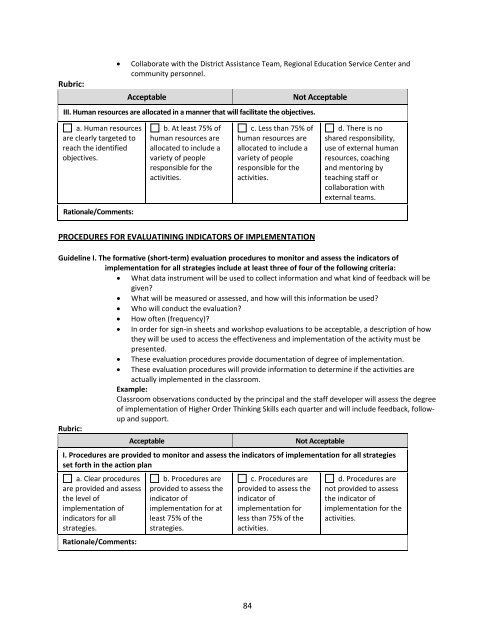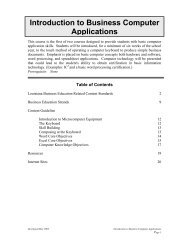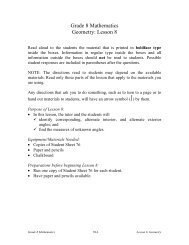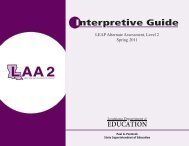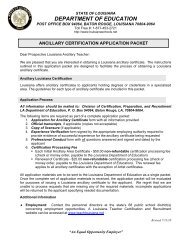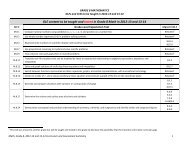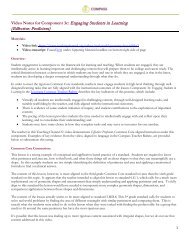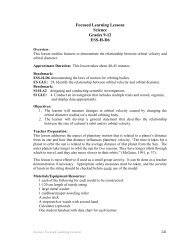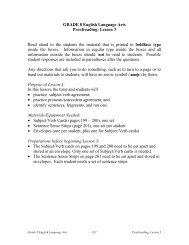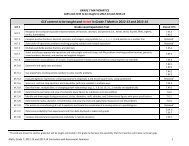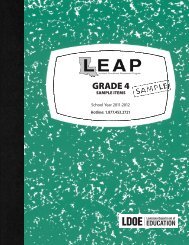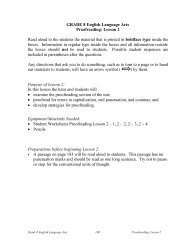School Improvement - Louisiana Department of Education
School Improvement - Louisiana Department of Education
School Improvement - Louisiana Department of Education
Create successful ePaper yourself
Turn your PDF publications into a flip-book with our unique Google optimized e-Paper software.
Rubric:<br />
• Collaborate with the District Assistance Team, Regional <strong>Education</strong> Service Center and<br />
community personnel.<br />
Acceptable<br />
III. Human resources are allocated in a manner that will facilitate the objectives.<br />
Not Acceptable<br />
a. Human resources<br />
are clearly targeted to<br />
reach the identified<br />
objectives.<br />
b. At least 75% <strong>of</strong><br />
human resources are<br />
allocated to include a<br />
variety <strong>of</strong> people<br />
responsible for the<br />
activities.<br />
c. Less than 75% <strong>of</strong><br />
human resources are<br />
allocated to include a<br />
variety <strong>of</strong> people<br />
responsible for the<br />
activities.<br />
d. There is no<br />
shared responsibility,<br />
use <strong>of</strong> external human<br />
resources, coaching<br />
and mentoring by<br />
teaching staff or<br />
collaboration with<br />
external teams.<br />
Rationale/Comments:<br />
PROCEDURES FOR EVALUATINING INDICATORS OF IMPLEMENTATION<br />
Guideline I. The formative (short‐term) evaluation procedures to monitor and assess the indicators <strong>of</strong><br />
implementation for all strategies include at least three <strong>of</strong> four <strong>of</strong> the following criteria:<br />
• What data instrument will be used to collect information and what kind <strong>of</strong> feedback will be<br />
given?<br />
• What will be measured or assessed, and how will this information be used?<br />
• Who will conduct the evaluation?<br />
• How <strong>of</strong>ten (frequency)?<br />
• In order for sign‐in sheets and workshop evaluations to be acceptable, a description <strong>of</strong> how<br />
they will be used to access the effectiveness and implementation <strong>of</strong> the activity must be<br />
presented.<br />
• These evaluation procedures provide documentation <strong>of</strong> degree <strong>of</strong> implementation.<br />
• These evaluation procedures will provide information to determine if the activities are<br />
actually implemented in the classroom.<br />
Example:<br />
Classroom observations conducted by the principal and the staff developer will assess the degree<br />
<strong>of</strong> implementation <strong>of</strong> Higher Order Thinking Skills each quarter and will include feedback, followup<br />
and support.<br />
Rubric:<br />
Acceptable<br />
Not Acceptable<br />
I. Procedures are provided to monitor and assess the indicators <strong>of</strong> implementation for all strategies<br />
set forth in the action plan<br />
a. Clear procedures<br />
are provided and assess<br />
the level <strong>of</strong><br />
implementation <strong>of</strong><br />
indicators for all<br />
strategies.<br />
Rationale/Comments:<br />
b. Procedures are<br />
provided to assess the<br />
indicator <strong>of</strong><br />
implementation for at<br />
least 75% <strong>of</strong> the<br />
strategies.<br />
c. Procedures are<br />
provided to assess the<br />
indicator <strong>of</strong><br />
implementation for<br />
less than 75% <strong>of</strong> the<br />
activities.<br />
d. Procedures are<br />
not provided to assess<br />
the indicator <strong>of</strong><br />
implementation for the<br />
activities.<br />
84


